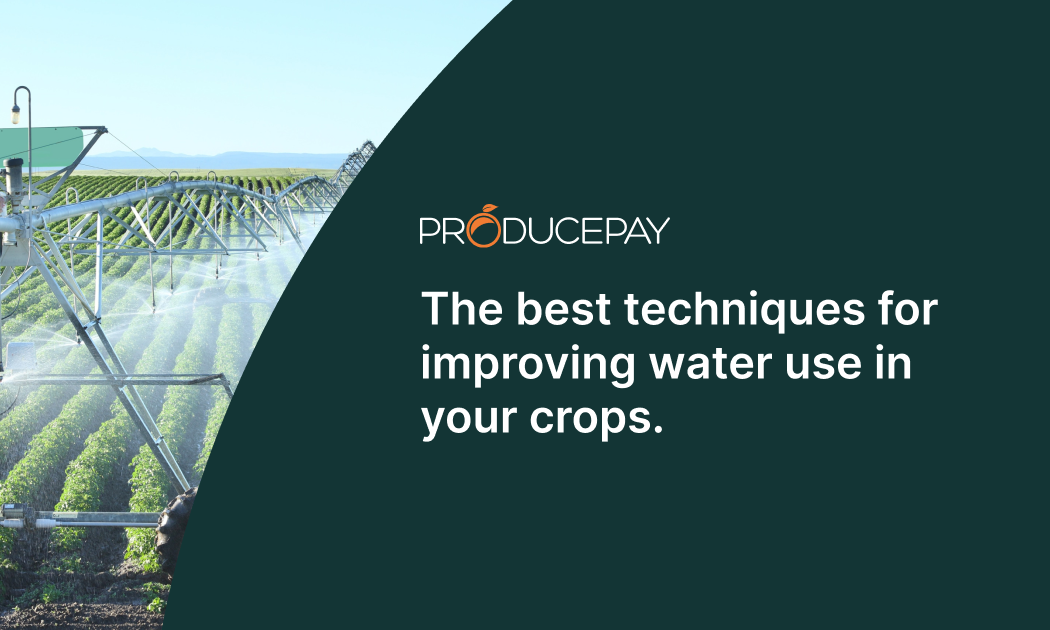
The best techniques for improving water use in your crops.
Fresh water is the world’s most valuable natural resource and also one of the most endangered due to mismanagement and climate change.
Agriculture is estimated to use around 70% of the global freshwater supply, meaning persistent shortages could jeopardize global food production.
Adopting better water management practices benefits the environment and allows agribusinesses to reduce production costs and improve sustainability in their operations.
Factors to consider
To optimize water management systems on production site, it’s essential to consider different factors, including:
- Water availability: Consider the current and future availability of water for crop growth, whether it comes from rain, dams, bodies of water, or groundwater. Water availability can be improved through capture and storage techniques.
- Temperature: Temperature and solar radiation directly affect the rate of plant development throughout all its physiological processes. Excessively high temperatures can cause water stress in plants, leading to increased transpiration and a greater need for water.
- Humidity and water balance: Both air and soil moisture are usable by plants, so special attention should be paid to the amount of water in different environments. A deficit or an excess of water will affect their development and growth.
By evaluating each of these factors, we can determine the amount of water required, define the most appropriate production & irrigation system and the most suitable water management practices.
Techniques to optimize water management
Depending on the type of production, different techniques can be used to optimize available water, either individually or collectively. However, we will divide these techniques into two categories.
The first are those related to the production process and the second are those that involve water collection and use.
1. Production process and planning
- Use of drip irrigation systems: This technique uses tubes with small holes to apply water directly to the plant. This allows for lower water consumption and reduces losses due to evaporation and filtration. Drip irrigation uses up to 40% less water than traditional irrigation methods.
- Adoption of hydroponic production: This type of production involves growing plants in an aqueous solution instead of soil, which allows for control over the amount of water and nutrients applied and reduces total water consumption.
- Opting for greenhouse production: A greenhouse production system increases water use efficiency by creating a microclimate that reduces evapotranspiration due to lower radiation and higher humidity. It also facilitates advanced irrigation and water-use techniques.
- Use of drought-resistant crops: Planting crops resistant to droughts reduces the water needed for their growth and production. Choosing the appropriate regional varieties can be an excellent way to reduce water demand.
2. Water collection and use
- Water capture and storage: Collecting and storing water in tanks allows for its subsequent use during droughts and reduces dependence on surface and groundwater sources. In addition to rainfall, water can be captured from soil filtration after irrigation, groundwater, and nearby bodies of water.
- Water recirculation: Implementing systems that allow water recirculation reduces water waste and lowers fertilizer consumption, resulting in reduced costs. Water recirculation is essential in production systems such as hydroponics and aquaponics.
- Drainage water collection: The collection of drainage water for agriculture is already a practice used in regions that do not have a safe or clean water source. However, this water must be disinfected to avoid health problems due to contaminated crops.
Water management technology
The integration of technology into water management can significantly enhance sustainability by optimizing techniques and practices. Examples of this include:
- Digital tools for measuring and forecasting weather conditions, particularly rainfall, allow for better seasonal production planning.
- Platforms and software for irrigation management can plan and automate irrigation to achieve more efficient water usage and reduce waste.
- Using sensors within a controlled environment to monitor and control the factors that influence crop water requirements.
Sources: FAO, Bayer, Scielo, Portal Frutícola

